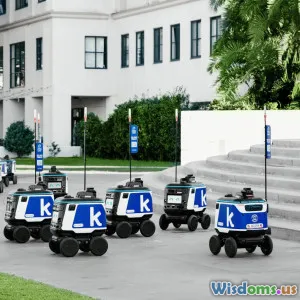
Building a Workforce for AI
6 min read Explore how to build a future-ready AI workforce with skills, training, and strategy to thrive in the age of automation. (0 Reviews)
Building a Workforce for AI: Preparing Talent for the Automation Era
Artificial Intelligence (AI) and automation are no longer futuristic concepts but integral parts of today’s business landscapes. As AI systems become increasingly sophisticated, the demand for a workforce adept at collaborating with these technologies surges. The question isn't if AI will transform the job market but how we can strategically build and sustain a workforce capable of thriving alongside automation.
Understanding the AI-Driven Workforce Shift
AI’s capabilities extend from automating repetitive tasks to augmenting complex decision-making processes. Studies by Deloitte reveal that nearly 60% of occupations have at least 30% of activities that could be automated—underscoring a profound shift in job roles rather than outright removal. For instance, in the healthcare sector, AI tools assist radiologists by rapidly analyzing imaging data, enhancing diagnosis accuracy rather than replacing the physician.
Hence, the workforce must evolve. This evolution involves developing a workforce that can comfortably integrate AI tools, interpret AI outputs, and innovate in conjunction with automated systems.
Building Blocks of an AI-Ready Workforce
1. Skills Development and Continuous Learning
Technical skills such as data analysis, machine learning understanding, and coding (Python, R) are foundational. However, equally critical are soft skills like critical thinking, creativity, and emotional intelligence — qualities AI struggles to replicate effectively.
Companies like IBM have launched initiatives such as SkillsBuild, focusing on reskilling workers with AI literacy and related competencies. According to the World Economic Forum’s Future of Jobs Report 2023, by 2025, over 50% of employees will require significant reskilling, making lifelong learning a crucial norm.
2. Collaborative Human-AI Roles
Rather than replacing humans, AI often complements their capabilities. Constructing workflows around this collaboration leads to higher productivity. Amazon’s warehouses, for example, employ robots to assist workers in lifting and transporting heavy items, reducing physical strain and enhancing efficiency.
Designing jobs that emphasize augmentation—where AI handles data-heavy procedures and humans focus on strategic decision-making—creates more meaningful and engaging employment.
3. Education System Alignment
To meet long-term workforce needs, education must pivot. Integrating AI-related curricula early on, from secondary schools to universities, equips students with fundamentals in AI and computational thinking. Nations like Singapore embed AI topics across disciplines, anticipating future workforce dynamics.
Moreover, partnerships between academia and industry help tailor courses to emerging job requirements, increasing graduate employability.
4. Ethical and Inclusive Workforce Planning
AI-related workforce initiatives must also consider ethical dimensions—privacy, bias mitigation, and equitable access to technology. Marginalized communities risk exclusion if reskilling programs are not accessible.
Incorporating diversity fosters a broader range of perspectives, which is vital for developing fair AI solutions. Google’s AI principles emphasize responsible design aligned with human rights, showcasing a corporate commitment to ethical AI workforce development.
Practical Steps for Organizations
Conducting Skills Gap Analysis
Audit the current workforce capabilities against future AI integration goals. This data-driven approach allows companies to identify skill shortages and tailor training interventions effectively.
Designing Tailored Learning Pathways
Customized learning paths encourage employees to engage actively. Platforms like Coursera and Udemy offer AI-centric courses that companies can incorporate to facilitate flexible learning.
Fostering an AI-Centric Culture
Leadership plays a key role in cultivating openness toward AI and continuous innovation. Encouraging experimentation and tolerance for failure helps demystify AI technologies.
Investing in Change Management
Transitioning to AI-augmented operations involves change management best practices to reduce resistance and facilitate smooth adoption. Transparent communication about AI’s impact avoids fear and uncertainty.
Real-World Insights
Accenture’s "Future Workforce Strategy Report" highlights that companies investing heavily in AI upskilling report 40% higher productivity rates. Additionally, at AT&T, a $1 billion retraining initiative paved the way for employees to transition from legacy tech roles to AI-related positions, resulting in increased retention and innovation.
Conclusion
Building a workforce for AI is not about tech acquisition alone but about nurturing a symbiotic relationship between human talent and automated intelligence. It requires proactive investment in education, open organizational cultures, ethical foresight, and continuous skill evolution.
Organizations and governments must collaborate to prepare workers today for the workforce of tomorrow, ensuring that AI amplifies human potential rather than diminishing it. The future favors those who adapt innovatively, making workforce transformation a strategic imperative in the AI era.
References:
- Deloitte Insights, "AI and the Workforce" (2023)
- World Economic Forum, Future of Jobs Report (2023)
- Accenture, Future Workforce Strategy Report (2022)
- IBM SkillsBuild Program
- Google AI Principles
- AT&T Upskilling Initiative Case Study
Rate the Post
User Reviews
Popular Posts





















